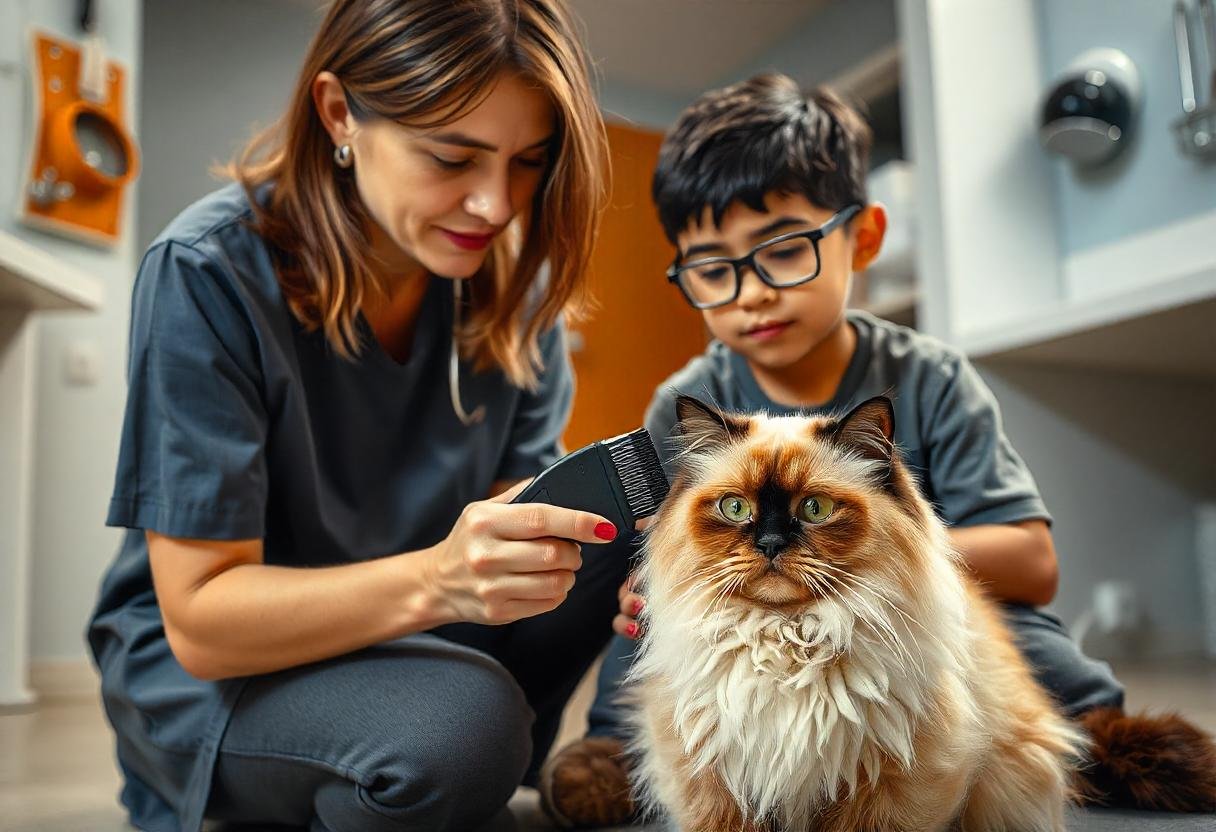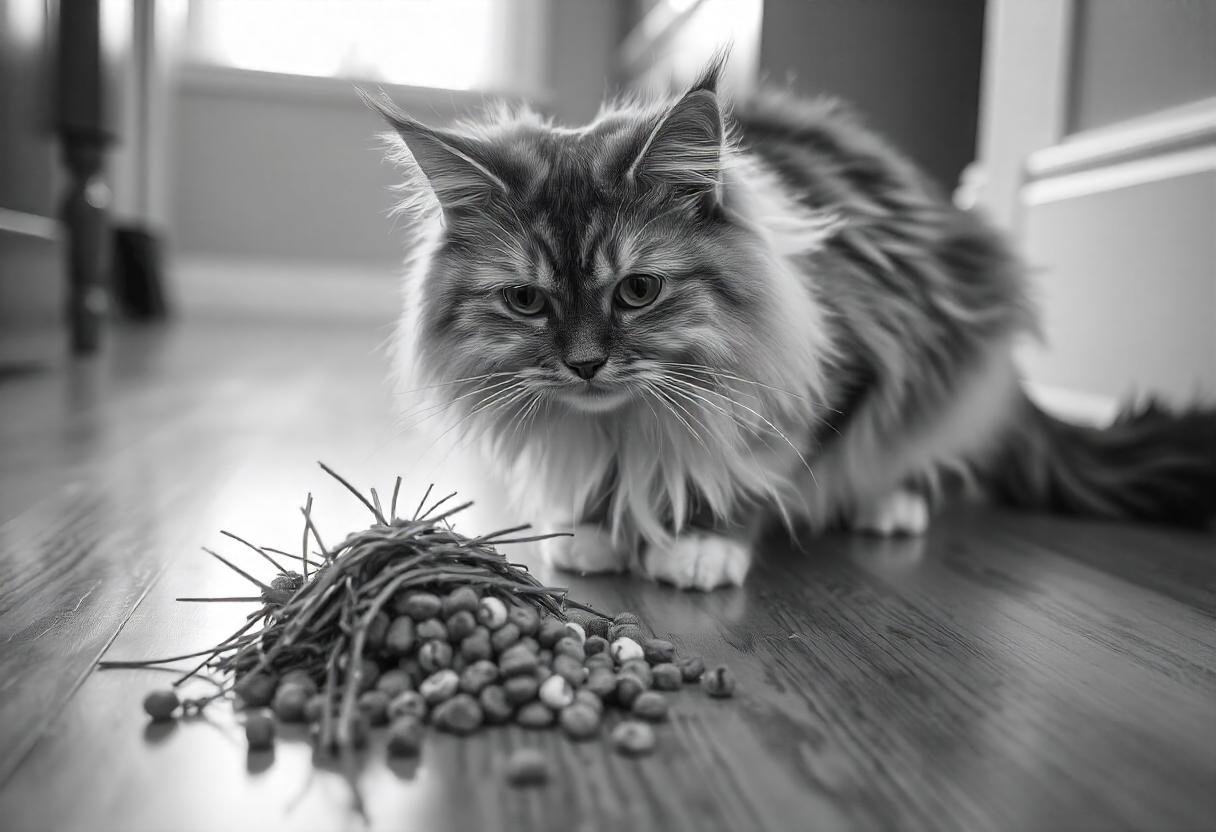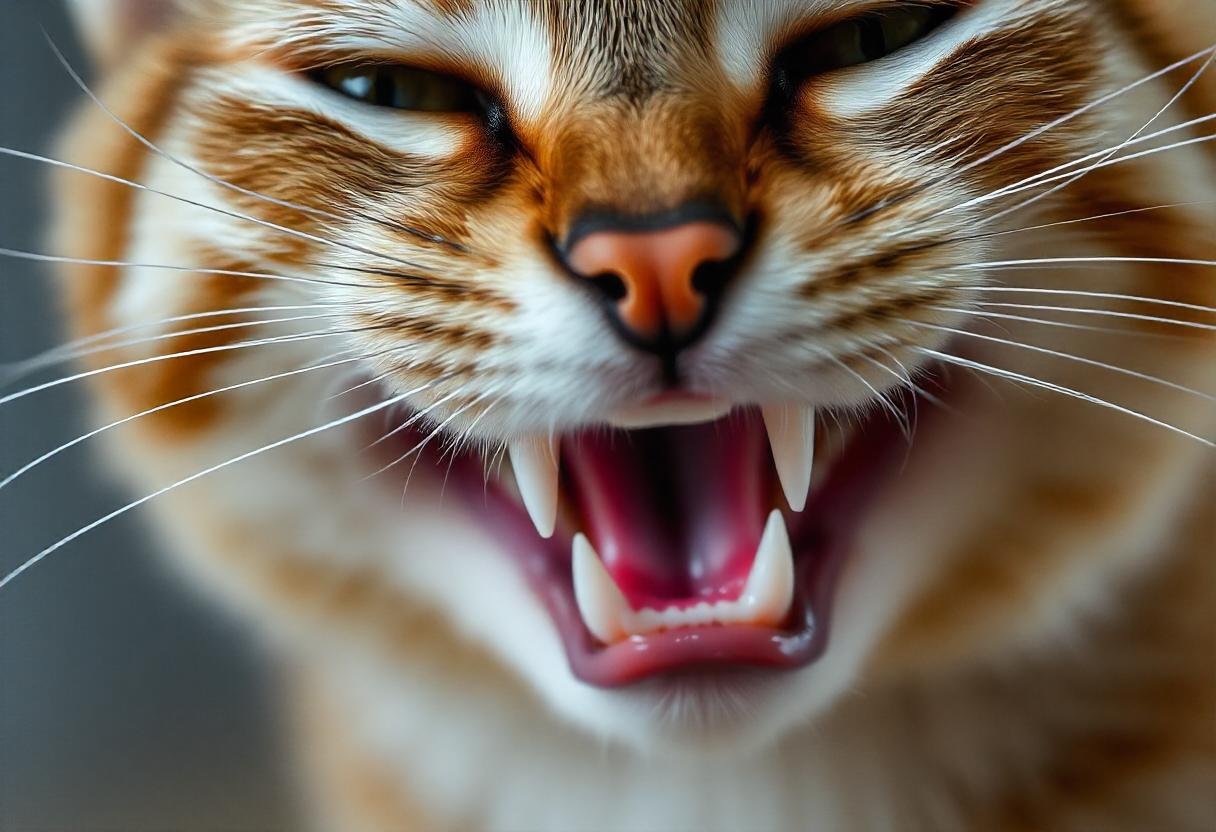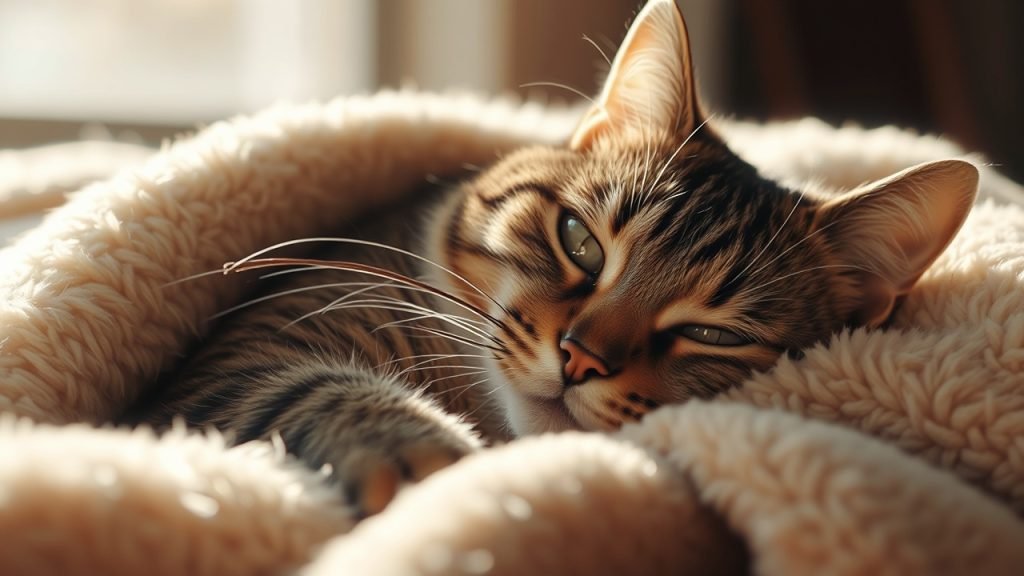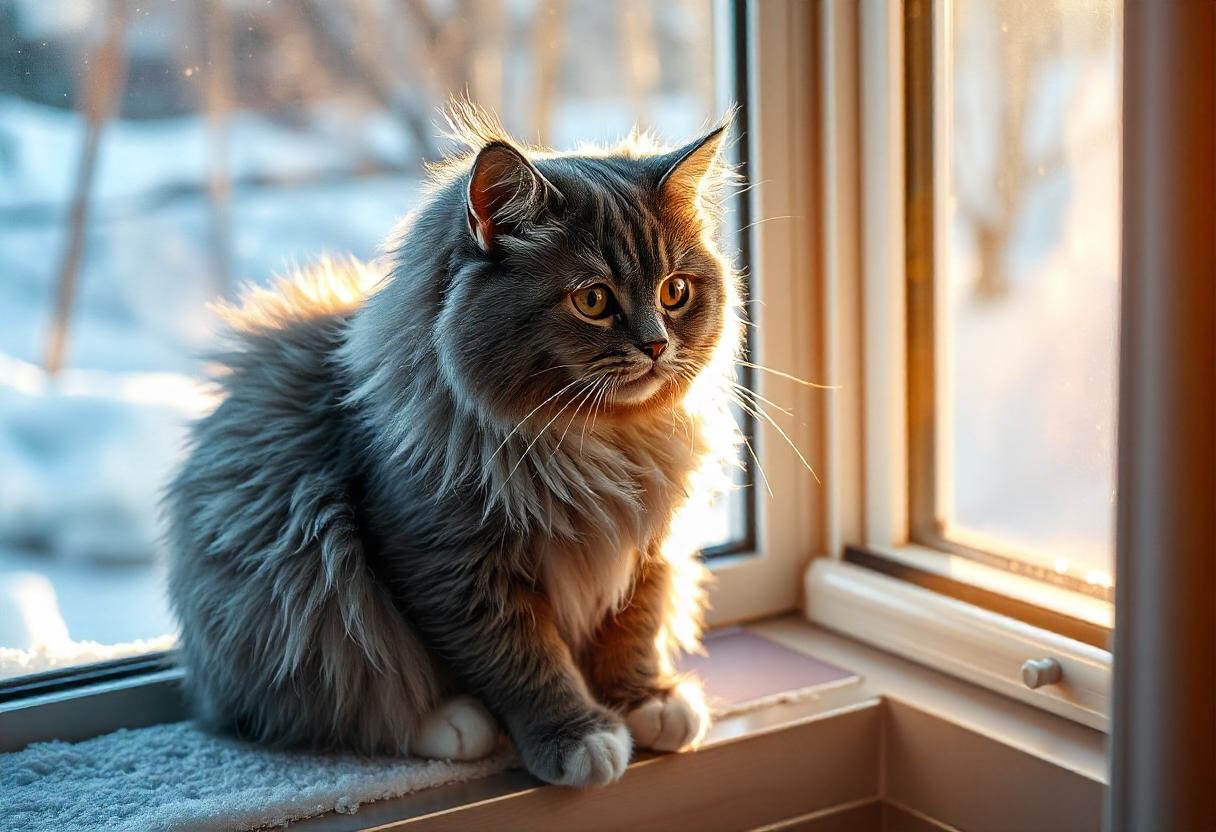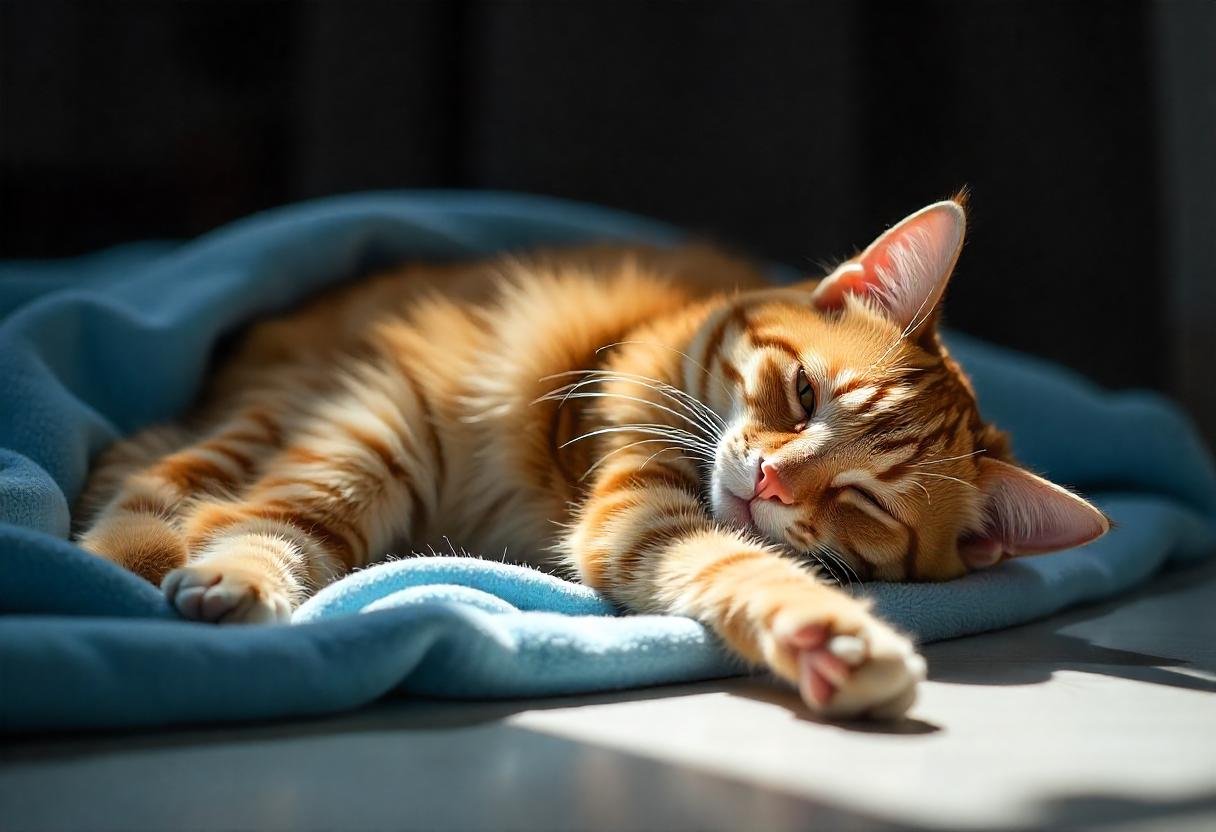Every cat owner wants to see their furry friend happy, healthy, and full of energy. But what happens when you notice something a little off about your cat? You might find yourself worried, wondering if they’re feeling unwell.
Why is it Important to Recognize Signs of Illness in Cats?
Cats are masters at hiding illness. They are natural predators and have evolved to conceal signs of weakness to avoid attracting predators. This makes it challenging for owners to detect illness, but recognizing the signs early on is crucial for getting them the care they need.
Common Signs Your Cat May Be Sick
Here are some common signs that your cat might be sick:
- Changes in Activity Levels: If your cat is suddenly sleeping more than usual or is less interested in playing, it could be a sign of illness.
- Loss of Appetite: A loss of appetite can be a sign of several conditions, including infections, pain, or underlying medical problems.
- Vomiting: Vomiting can be caused by a variety of factors, including:
- Dietary indiscretion: Eating something they shouldn’t.
- Hairballs: A common issue in cats.
- Stress: Stress can cause vomiting.
- Gastrointestinal issues: Issues like gastritis (inflammation of the stomach), intestinal parasites, or even cancer.
- Diarrhea: Diarrhea is a sign of digestive upset and could indicate a variety of problems, such as:
- Dietary changes: Sudden changes to their diet.
- Stress: Stress can also lead to diarrhea.
- Infections: Bacterial or viral infections.
- Parasites: Intestinal worms or parasites.
- Inflammatory bowel disease (IBD): A chronic inflammation of the intestines.
- Weight Loss: Unintentional weight loss can be a sign of various conditions, including:
- Hyperthyroidism: An overactive thyroid gland.
- Kidney disease: Problems with the kidneys.
- Liver disease: Problems with the liver.
- Cancer: Cancer in the body.
- Increased Thirst: Increased thirst, known as polydipsia, can be a sign of several medical conditions, including:
- Kidney disease: Kidney disease can lead to excessive thirst.
- Diabetes: Diabetes affects the body’s ability to regulate blood sugar.
- Hyperthyroidism: An overactive thyroid gland can increase thirst.
- Increased Urination: Increased urination, known as polyuria, can also be a sign of a medical condition, such as:
- Kidney disease: Kidney disease can affect the body’s ability to regulate fluids.
- Diabetes: Diabetes can cause increased urination.
- Changes in Grooming: A cat who is not grooming as much as usual might have a matted or dirty coat, indicating a health problem.
- Changes in Vocalization: An increase in meowing, howling, or crying could indicate discomfort or pain.
- Changes in Behavior: Changes in behavior, such as hiding more, being more aggressive, or acting more fearful, could be signs of illness.
- Respiratory Problems: Difficulty breathing, wheezing, or coughing can be signs of respiratory infections or other conditions.
- Eye Discharge: Watery or cloudy discharge from the eyes could indicate an eye infection or allergies.
- Ear Discharge: Discharge from the ears could indicate an ear infection or allergies.
- Changes in Litter Box Habits: Sudden changes in litter box habits, such as increased urination or defecation, or accidents outside the litter box, could indicate urinary tract issues or stress.
- Changes in the Appearance of Gums: The gums should normally be a healthy pink color. Pale gums can be a sign of anemia, dehydration, or other medical problems.
- Swollen Lymph Nodes: Swollen lymph nodes, especially if they are painful or firm, can be a sign of infection or inflammation.
- Pain: Cats are very good at hiding pain. If you notice your cat limping, avoiding certain activities, or showing signs of discomfort, it could indicate pain.
- Changes in the Appearance of Fur: Changes in the appearance of your cat’s fur, such as dullness, dryness, or hair loss, could be a sign of illness.
- Seizures: Seizures are a serious medical condition that can cause tremors, muscle spasms, or loss of consciousness.

A Case Study: Whiskers’ Mysterious Illness
Whiskers, a 6-year-old Maine Coon, started acting lethargic and was not interested in eating. His owner, David, also noticed that Whiskers was breathing more rapidly than usual. “It was unusual for Whiskers to be so quiet,” David says. “He’s normally a very playful cat, but he just wanted to sleep.”
David took Whiskers to the vet, and the veterinarian performed a physical exam and checked his temperature. The veterinarian found that Whiskers had a fever. “We need to run some blood tests and X-rays to find out what’s causing the fever,” the veterinarian explained.
The blood tests and X-rays revealed that Whiskers had a urinary tract infection. The veterinarian prescribed antibiotics, and Whiskers was back to his playful self after a few days.
When to Worry About Your Cat’s Health
It’s important to remember that every cat is unique and has their own normal range of behavior. Some cats are naturally more active than others, and some cats are more vocal than others. However, if you notice any significant changes in your cat’s behavior or appearance, or if they’re exhibiting any of the symptoms mentioned above, it’s important to consult a veterinarian.
General Signs to See the Vet
- Persistent Symptoms: If your cat’s symptoms last for more than a few days, or if they’re getting worse, it’s best to seek veterinary advice.
- Sudden Changes in Behavior: Any sudden change in your cat’s behavior, such as a decrease in activity level, a loss of appetite, or an increase in hiding, is a good reason to contact your veterinarian.
- Signs of Distress: If your cat appears to be in pain, or if they’re struggling to breathe or are vomiting frequently, seek veterinary attention immediately.
Conclusion
Recognizing the signs your cat may be sick is essential for providing prompt veterinary care. By observing your cat’s behavior, paying attention to their physical appearance, and following a regular checkup schedule, you can help ensure they receive the best possible care and live a long, healthy life.



